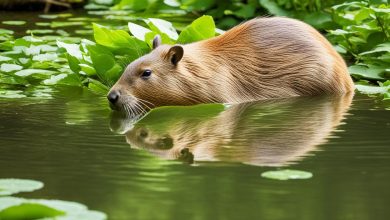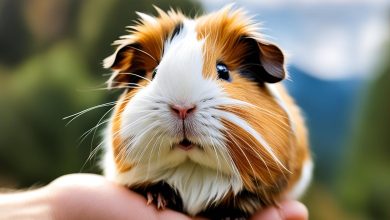The aardvark, often called the “earth pig,” is a distinct mammal native to sub-Saharan Africa. It’s the sole member of the Tubulidentata order and the family Orycteropodidae. This creature stands out with its elongated snout, rabbit-like ears, and a tail akin to a kangaroo’s. Aardvarks are solitary, nocturnal beings that mainly consume ants and termites. They use their long, sticky tongues to devour up to 50,000 insects nightly.
These animals are adept at burrowing, capable of digging holes up to 2 feet deep in mere seconds. Their powerful claws serve as a defense against predators. Aardvarks are vital to their ecosystem and hold a special place in African culture and mythology.
What is an Aardvark?
Aardvarks are intriguing mammals native to sub-Saharan Africa. They stand out with their elongated snout akin to a pig, large ears like a rabbit, and a curved back. These creatures weigh between 110 to 180 pounds and stretch from 43 to 53 inches long, with an additional 21 to 26 inches for their tail.
Appearance and Size
Their appearance is distinct, featuring four-toed front and five-toed rear feet with flat, shovel-like nails. These features make them instantly recognizable among African mammals.
Habitat and Range
Aardvarks inhabit a wide range of sub-Saharan Africa, from grasslands to mountainous regions. They prefer habitats without very rocky terrain, as it hinders their digging of extensive burrows. These burrows can extend from 6.5 to 42 feet in length.
“Nearly half of a dead aardvark’s stomach contents consisted of sand.”
Aardvarks have evolved to thrive in diverse African landscapes. Their unique appearance, size, and habitat preferences highlight their fascinating nature. Their distinct traits and adaptations make them a compelling subject for further study.
The Unique Anatomy of Aardvarks
Aardvarks stand out with their remarkable anatomy, distinct from other mammals. These pig-sized creatures, feeding on insects, have evolved unique features for their African environment. Their dental structure, digestive system, and burrowing skills are particularly noteworthy.
Teeth and Tubular Digestive System
Aardvarks have a dental setup unlike most mammals. Their teeth are bundles of tubes filled with vasodentin, not the typical molars and incisors. This design lets them swallow their food whole, then grind it in their muscular stomachs. Their aardvark teeth grow continuously, aiding in chewing through the hard exoskeletons of ants and termites.
Their aardvark digestive system is also unique, featuring a tubular design. This setup allows them to swallow large amounts of food, relying on strong stomach muscles for digestion.
Powerful Claws and Burrowing Abilities
Aardvarks have strong front claws, essential for accessing their food. These aardvark claws help them dig into ant and termite mounds, revealing the colonies beneath. They also serve as a defense, enabling aardvarks to dig holes and hide quickly from predators like hyenas and lions.
Their aardvark’s burrowing abilities are impressive, capable of digging up to 2 feet in 15 seconds. This skill allows them to build complex underground tunnels, offering shelter and safety from threats.
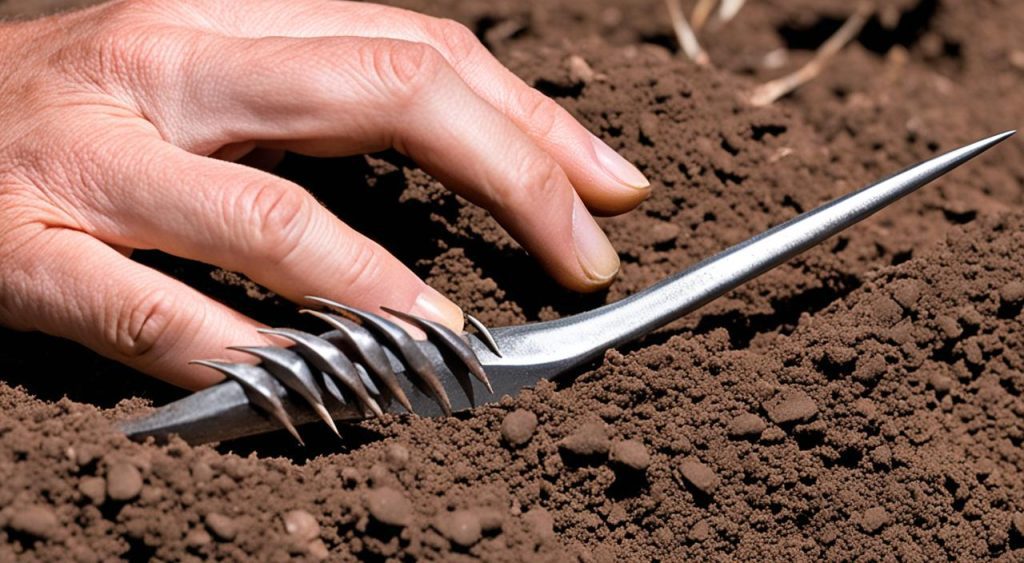
“Aardvarks possess a truly remarkable anatomy that sets them apart from other mammals.”
Aardvark Diet and Eating Habits
Aardvarks are primarily insectivores, feeding almost exclusively on ants and termites. They use their long, sticky tongues, which can extend up to 12 inches (30.5 centimeters), to lap up tens of thousands of these insects each night. In fact, an aardvark is capable of consuming up to 50,000 ants and termites per night, making them highly efficient at controlling insect populations.
In addition to their insect-based diet, aardvarks also supplement their meals with the aardvark cucumber, a plant that propagates its seeds through aardvark feces. Aardvarks swallow their food whole and rely on the muscular contractions of their stomachs to grind and digest the hard-shelled insects. This unique digestive system allows aardvarks to derive most of their necessary moisture from their insect-based diet, reducing the need to visit traditional watering holes and exposing themselves to potential predators.
| Aardvark Diet Facts | Details |
|---|---|
| Predominant Food Sources | Ants and termites |
| Tongue Length | Up to 12 inches (30.5 cm) |
| Insects Consumed per Night | Up to 50,000 |
| Supplementary Food | Aardvark cucumber |
| Digestive System | Swallows food whole, relies on stomach contractions to grind and digest insects |
| Moisture Source | Insect-based diet, reducing need to visit watering holes |
The aardvark’s unique feeding habits and efficient digestive system allow it to thrive on a diet dominated by ants and termites, two of the most abundant insects in its natural habitat. This specialized adaptation has made the aardvark a highly successful and important member of the ecosystem.
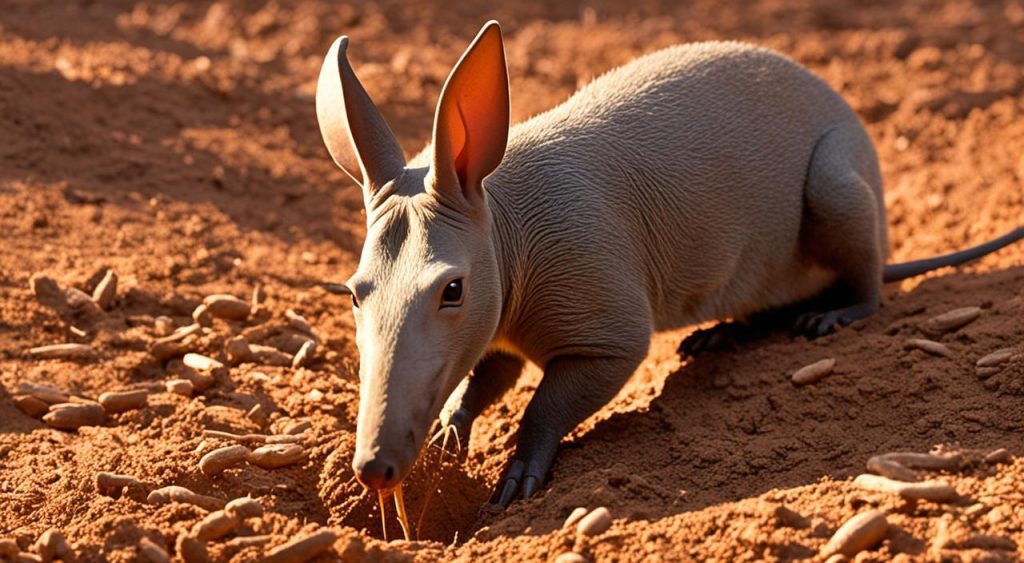
Aardvark Behavior and Lifestyle
Aardvarks stand out with their unique nocturnal and solitary habits. As night falls, they leave their underground homes to roam the African wilderness. Their keen senses of sound and smell guide them through the darkness.
Nocturnal and Solitary Nature
Mostly nocturnal, aardvarks are most active from 7 pm to as early as 5 am. By day, they rest in their complex tunnel systems. This lifestyle shields them from the day’s heat and predators near water sources.
These animals prefer to be alone, coming together only to mate. They spend their lives apart, traveling long distances at night for food. Their diet mainly consists of ants and termites, which they cover up to 3 miles (5 kilometers) to find.
Their nocturnal and solitary ways highlight their remarkable survival strategies in sub-Saharan Africa. These behaviors not only help them survive but also make them fascinating and mysterious creatures.
Aardvark Reproduction and Offspring
Aardvarks, with their unique presence in the African savanna, exhibit a remarkable reproductive cycle. This cycle is crucial for their species’ survival. We will explore the details of aardvark reproduction, gestation, and offspring development.
The gestation period for female aardvarks is about seven months. They give birth to a single aardvark cub. These newborns weigh around 4.4 pounds (2 kilograms). For the first two weeks, they stay in the burrow with their mother. Later, they accompany her at night to hunt for food.
By three months, aardvark cubs are weaned. They become independent at six months, capable of digging their own burrows and finding food. Both males and females reach sexual maturity at around 2 years of age, enabling them to reproduce and sustain the aardvark population.
| Aardvark Reproduction and Offspring Facts | Details |
|---|---|
| Gestation Period | Approximately 7 months |
| Litter Size | Single cub |
| Newborn Weight | Around 4.4 pounds (2 kilograms) |
| Weaning Age | Around 3 months |
| Age of Independence | 6 months |
| Sexual Maturity | Around 2 years of age |
The survival and growth of the aardvark population highlight their remarkable adaptations. Understanding their reproductive cycle helps us appreciate their life cycle and resilience against environmental challenges.
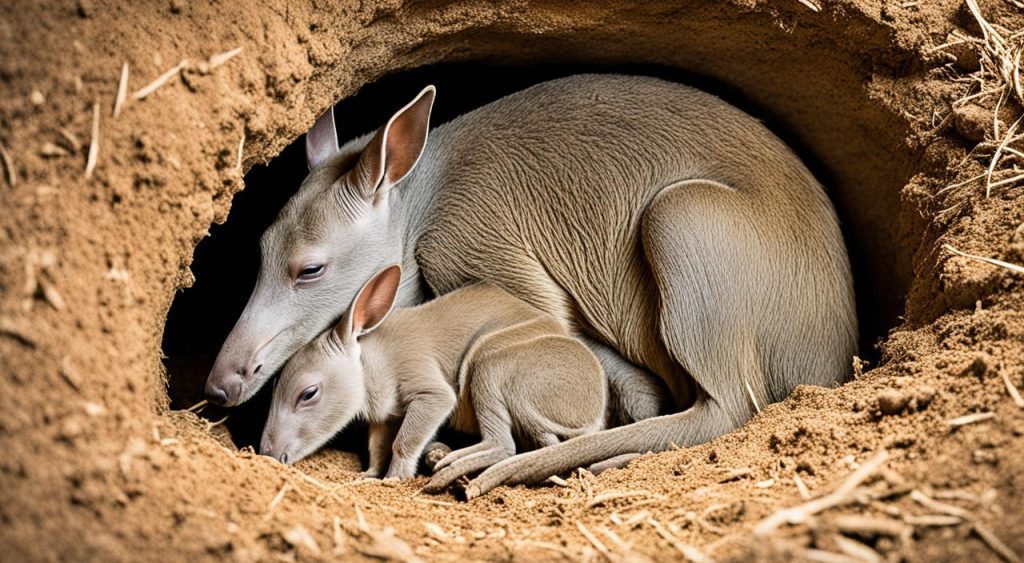
The Incredible Sense of Smell in Aardvarks
Aardvarks stand out for their unmatched sense of smell, surpassing even the keenest dogs. This superiority stems from up to 10 turbinate bones in their snouts, unlike the 4 or 5 found in dogs. These bones, shaped like seashells, enhance the nasal passages, providing a larger area for scent processing.
Their brain’s olfactory lobes are notably large, enabling them to detect the pheromones and scents of their main food sources, ants and termites, from afar. This advanced aardvark sense of smell is vital for their survival. It helps them to navigate, find mates, and locate food efficiently, even under the cover of night.
An aardvark can devour over 45,000 termites in one night, thanks to its exceptional aardvark olfactory system. Their elongated aardvark snout and robust claws facilitate digging into termite mounds and ant hills. They then use their sticky tongues to capture their prey.
“Aardvarks have up to 9-11 olfactory turbinate bones, the highest number in any mammal.”
This remarkable sense of smell is a testament to nature’s ingenuity, enabling aardvarks to flourish and play a crucial role in their ecosystem. By inhabiting burrows that shelter various species, aardvarks significantly impact their environment.
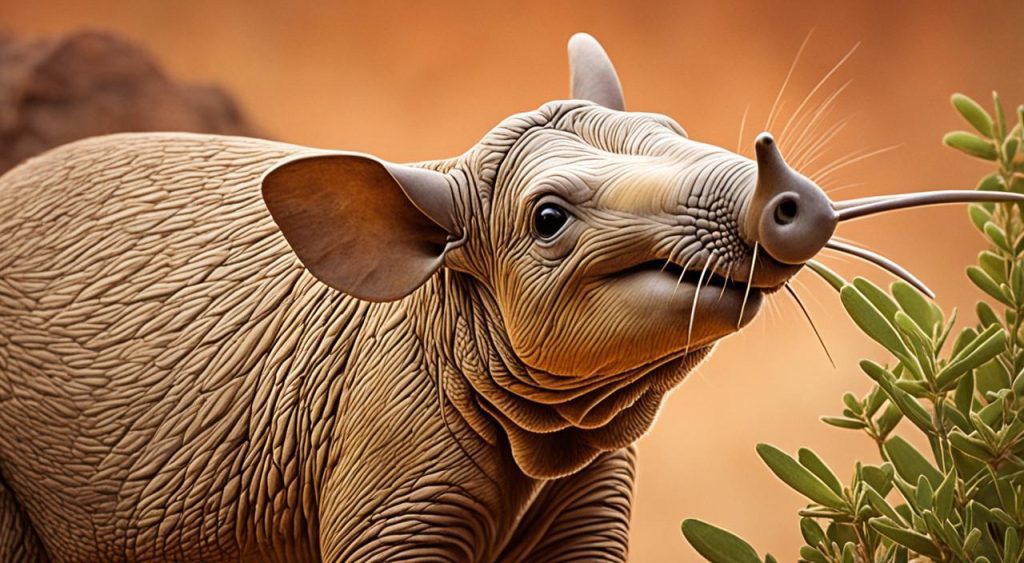
Aardvark in Culture and Mythology
The aardvark has a deep-rooted presence in African culture and mythology. Its association with the Egyptian deity Set, the god of chaos and violence, is particularly intriguing. Set’s animal-like features, including the elongated head and snout, mirror the aardvark’s unique appearance. This suggests an ancient reverence for these mammals.
The mythological link between the aardvark and Set remains unclear. Yet, it’s possible that ancient Egyptian traders and explorers encountered aardvarks during their travels. This could have led to their inclusion in Egyptian mythology. The aardvark’s burrowing skills, nocturnal behavior, and formidable defense capabilities might have added to its symbolic importance.
Cerebus the Aardvark Comic Book Series
Recently, the aardvark has entered popular culture, notably through Cerebus the Aardvark in comics. This antihero, the only anthropomorphized animal in his world, has captivated readers with his complex adventures. His story, spanning 300 issues, has made the aardvark a significant figure in modern storytelling.
Canadian artist Dave Sim’s Cerebus comic series was groundbreaking. It tackled politics, religion, and human nature through an aardvark character. Cerebus’s decades-long journey challenged readers with its unique narrative and social commentary. This has made the aardvark a symbol of complexity and depth in contemporary culture.
“Cerebus, the only anthropomorphized animal in his fictional universe, captivated readers with his complex and often controversial adventures over the course of 300 issues, cementing the aardvark’s place in modern storytelling.”
Aardvark Conservation Status
Aardvarks, found throughout sub-Saharan Africa, are not currently considered threatened. The International Union for Conservation of Nature (IUCN) has listed them as a “Least Concern” species. However, their numbers are decreasing in many areas.
Human expansion and hunting pose significant threats to aardvarks. Some landowners hunt them, seeing their burrows as a nuisance. Pesticide use in agriculture also harms aardvarks by reducing their food supply, mainly ants and termites.
Despite their widespread presence, aardvarks need ongoing conservation efforts to thrive. The IUCN estimates over 10,000 mature aardvarks exist globally, possibly making up 10-30% of the total population.
| Aardvark Conservation Status | Key Statistics |
|---|---|
| IUCN Red List Status | Least Concern |
| Population Trend | Decreasing |
| Global Population Estimate | Over 10,000 mature individuals |
| Primary Threats | Habitat loss due to human expansion Hunting and persecution by landowners Pesticide use reducing food sources |
Even with a “Least Concern” status, aardvarks require continued conservation. Addressing threats like habitat loss and hunting is essential for their survival. This will help protect these unique mammals across their range.
Conclusion
Exploring the world of aardvarks reveals their incredible adaptations and unique traits. These mammals stand out with their exceptional smell and digging skills. They play a vital role in their ecosystem, showcasing the marvels of nature.
This journey has deepened my appreciation for aardvarks in African culture and their broader significance in the Afrotheria superorder. Their distinct look and behavior have sparked global fascination. This has led us to explore the vast diversity of life on Earth.
Reflecting on the aardvark facts, aardvark information, and aardvark pictures I’ve discovered, I feel immense admiration and respect. By continuing to study and protect aardvarks, we can help them thrive. This ensures their survival and inspires us with their resilience and unique adaptations.
FAQ
What is an aardvark?
Known as the “earth pig,” the aardvark is a distinct mammal native to sub-Saharan Africa. It belongs to the Tubulidentata order and is the sole member of the Orycteropodidae family.
What are the distinctive features of an aardvark?
Aardvarks stand out with their elongated snout, ears similar to a rabbit’s, and a tail akin to a kangaroo’s. Their front and rear feet feature four and five toes, respectively, all with flat, shovel-like nails.
Where do aardvarks live?
Aardvarks inhabit sub-Saharan Africa, thriving in various landscapes like grasslands, savannas, and bushlands. They prefer habitats without extreme rocky terrain, as it hinders their burrowing activities.
What is unique about the aardvark’s dental structure?
Their dental structure is unique, featuring teeth with tubes filled with vasodentin instead of typical molars and incisors. This adaptation enables them to consume large quantities of food, which is then processed in their muscular stomachs.
What do aardvarks eat?
Aardvarks primarily consume insects, focusing on ants and termites. They use their long, extendable tongues to gather tens of thousands of insects each night.
How do aardvarks behave and live?
These nocturnal animals are solitary, emerging at night to forage and engage in daily activities. By day, they retreat to their extensive burrows, where they rest in a curled position.
How do aardvarks reproduce and care for their young?
Female aardvarks carry their young for about seven months before giving birth to a single calf. The newborns stay in the burrow for two weeks before joining their mother for foraging.
What is unique about the aardvark’s sense of smell?
Aardvarks possess an unparalleled sense of smell, surpassing even the most sensitive dogs. This is attributed to their snouts, which contain up to 10 turbinate bones.
How are aardvarks connected to African culture and mythology?
Ancient Egyptian mythology linked the aardvark to the deity Set, highlighting their historical significance. Today, aardvarks appear in popular culture, notably through the character Cerebus the Aardvark.
What is the conservation status of aardvarks?
Despite their wide distribution, aardvarks are not considered threatened. The IUCN classifies them as “Least Concern,” but their populations are declining in many areas.



